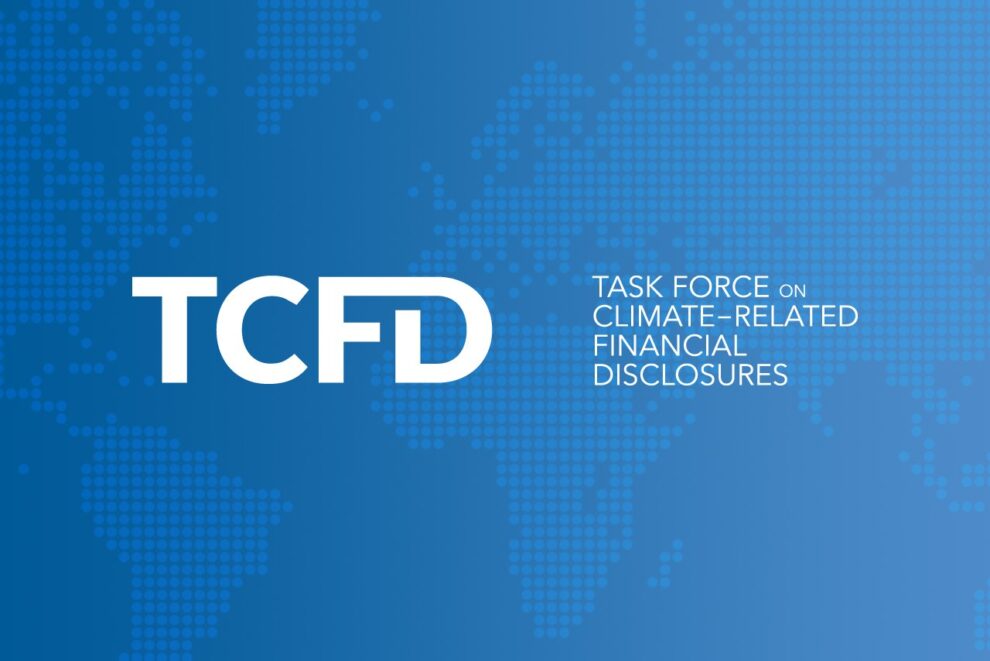In an era where climate change is no longer a distant threat but a pressing global reality, businesses, investors, and regulators are increasingly focused on transparency and accountability in environmental reporting. One of the most influential frameworks in this domain is the Task Force on Climate-related Financial Disclosures (TCFD). As organizations strive to align with global sustainability standards, the demand for professionals skilled in TCFD principles is growing rapidly. This has led to the emergence of specialized TCFD courses designed to equip individuals and teams with the knowledge and tools to implement effective climate-related financial disclosures.
This comprehensive article explores the TCFD framework, the importance of TCFD training, the structure and content of a typical TCFD course, its target audience, benefits, and how it supports long-term organizational resilience and compliance.
What Is the TCFD?
The Task Force on Climate-related Financial Disclosures (TCFD) was established in 2015 by the Financial Stability Board (FSB), an international body that monitors the global financial system. Its mission: to develop consistent, transparent, and decision-useful climate-related financial disclosures that companies can use to inform investors, lenders, and insurers about climate risks and opportunities.
The TCFD recommendations are built around four core pillars:
- Governance – How an organization’s board and management oversee and manage climate-related risks and opportunities.
- Strategy – The actual and potential impacts of climate-related risks and opportunities on the organization’s businesses, strategy, and financial planning.
- Risk Management – How the organization identifies, assesses, and manages climate-related risks.
- Metrics and Targets – The metrics and targets used to assess and manage relevant climate-related risks and opportunities.
These recommendations have become a global benchmark for climate disclosure, adopted by thousands of organizations across sectors and geographies. Regulatory bodies in countries like the UK, New Zealand, Switzerland, and parts of the United States have already made TCFD-aligned reporting mandatory or strongly encouraged.
Why Is TCFD Training Important?
As climate change poses systemic risks to financial stability, stakeholders—including shareholders, customers, regulators, and employees—are demanding greater transparency. A TCFD course provides structured learning that helps organizations and individuals understand how to:
- Identify and assess physical and transition risks related to climate change.
- Integrate climate considerations into strategic planning and risk management.
- Communicate climate-related financial information clearly and consistently.
- Meet regulatory and investor expectations.
Without proper training, even well-intentioned organizations may struggle to implement the TCFD framework effectively. Misinterpretation of guidelines, inconsistent reporting, or lack of internal alignment can undermine credibility and lead to reputational or financial risks.
A TCFD course bridges this knowledge gap, offering a clear roadmap to compliance and best practices in climate disclosure.
Who Should Take a TCFD Course?
TCFD training is not limited to sustainability professionals. It is highly relevant for a broad range of roles across industries. Ideal candidates include:
- Corporate Sustainability Managers – Responsible for ESG (Environmental, Social, and Governance) reporting and climate strategy.
- Financial Officers and CFOs – Need to understand how climate risks affect financial performance and long-term value.
- Risk Management Professionals – Must integrate climate risk into enterprise risk frameworks.
- Investors and Asset Managers – Seeking to assess portfolio resilience and make informed capital allocation decisions.
- Legal and Compliance Officers – Ensuring adherence to evolving climate disclosure regulations.
- Consultants and Auditors – Advising clients on TCFD alignment and assurance.
- Board Members and Executives – Responsible for oversight and strategic direction.
Whether you’re in finance, operations, governance, or consulting, a TCFD course enhances your ability to contribute meaningfully to your organization’s climate resilience and reporting efforts.
What Does a TCFD Course Cover?
A high-quality TCFD course typically spans several modules, combining theoretical knowledge with practical applications. Here’s a breakdown of what participants can expect:
1. Introduction to Climate Change and Financial Risk
- Overview of climate science and its economic implications.
- Differentiating between physical risks (e.g., floods, wildfires) and transition risks (e.g., policy changes, technological shifts).
- Case studies of companies affected by climate-related disruptions.
2. Understanding the TCFD Framework
- Deep dive into the four core components: Governance, Strategy, Risk Management, and Metrics & Targets.
- Explanation of key terminology (e.g., scenario analysis, resilience assessment, time horizons).
- How TCFD complements other frameworks like GRI, SASB, and ISSB.
3. Governance and Leadership Accountability
- Role of the board and executive leadership in climate oversight.
- Integrating climate considerations into corporate governance structures.
- Reporting lines and accountability mechanisms.
4. Climate Risk and Opportunity Assessment
- Tools and methodologies for identifying and categorizing climate risks.
- Introduction to scenario analysis (e.g., using 1.5°C, 2°C, and business-as-usual scenarios).
- Evaluating financial impacts under different climate futures.
5. Strategic Integration and Financial Planning
- Aligning climate strategy with business models and long-term planning.
- Assessing resilience of current strategies under various climate scenarios.
- Disclosure of climate-related financial impacts in annual reports and investor communications.
6. Risk Management Processes
- Embedding climate risk into enterprise risk management (ERM).
- Developing mitigation and adaptation strategies.
- Monitoring and reporting on risk response actions.
7. Metrics, Targets, and KPIs
- Selecting relevant metrics (e.g., GHG emissions, carbon footprint, energy efficiency).
- Setting science-based targets (SBTs) and net-zero goals.
- Tracking progress and ensuring data accuracy.
8. Disclosure and Reporting Best Practices
- Preparing TCFD-aligned reports.
- Using standardized templates and disclosure checklists.
- Ensuring consistency, comparability, and materiality in reporting.
9. Regulatory Landscape and Global Adoption
- Overview of mandatory TCFD requirements in different jurisdictions.
- Understanding the role of regulators like the SEC (U.S.), FCA (UK), and IOSCO.
- Future trends in climate disclosure regulation.
10. Case Studies and Practical Exercises
- Analysis of real-world TCFD disclosures from leading companies.
- Hands-on exercises in scenario planning and report drafting.
- Peer discussions and expert feedback.
Many courses also include downloadable resources, templates, and access to expert instructors with experience in sustainability, finance, and regulation.
Types of TCFD Courses Available
TCFD training comes in various formats to suit different learning preferences and professional needs:
- Online Self-Paced Courses – Ideal for individuals seeking flexibility. Offer video lectures, quizzes, and digital certificates. Platforms like Coursera, edX, and specialized ESG academies offer such programs.
- Instructor-Led Virtual Classes – Live sessions with real-time interaction, Q&A, and group activities. Often used for corporate training.
- On-Site Corporate Workshops – Customized training delivered at a company’s premises, tailored to specific industry challenges and organizational goals.
- Certification Programs – Multi-week programs that culminate in a recognized credential (e.g., “Certified TCFD Practitioner”).
Some courses are free, while others range from $300 to $2,000 depending on depth, duration, and accreditation.
Benefits of Taking a TCFD Course
Investing in a TCFD course delivers both individual and organizational benefits:
1. Enhanced Professional Credibility
Completing a TCFD course demonstrates expertise in one of the most sought-after areas of sustainability and finance. It strengthens your resume and positions you as a leader in ESG and climate risk management.
2. Improved Organizational Compliance
With increasing regulatory pressure, TCFD-trained professionals help their organizations avoid penalties, meet disclosure requirements, and stay ahead of legal developments.
3. Better Investor Relations
Investors are prioritizing climate-resilient companies. A well-prepared TCFD report, backed by knowledgeable staff, enhances investor confidence and can improve access to capital.
4. Strategic Decision-Making
Understanding climate risks enables more informed long-term planning. Organizations can identify vulnerabilities, explore low-carbon opportunities, and innovate sustainably.
5. Competitive Advantage
Companies with robust TCFD disclosures are viewed as more transparent and forward-thinking. This enhances brand reputation and can differentiate them in competitive markets.
6. Support for Net-Zero Goals
TCFD training supports broader sustainability initiatives, including carbon reduction, energy transition, and supply chain resilience.
Real-World Impact of TCFD Implementation
Numerous organizations have successfully implemented TCFD recommendations after undergoing structured training. For example:
- Unilever uses TCFD-aligned disclosures to communicate how climate change affects its supply chain and product innovation.
- HSBC publishes detailed climate risk assessments based on scenario analysis, helping investors understand financial exposure.
- Microsoft integrates TCFD into its annual sustainability report, linking climate strategy to corporate performance.
These disclosures not only meet regulatory expectations but also build trust with stakeholders and drive internal accountability.
How to Choose the Right TCFD Course
With many options available, selecting the right course requires careful consideration. Here are key factors to evaluate:
- Accreditation and Reputation – Choose courses offered by recognized institutions (e.g., universities, professional bodies, or established ESG training providers).
- Curriculum Depth – Ensure the course covers all four TCFD pillars and includes practical tools.
- Instructor Expertise – Look for trainers with real-world experience in climate finance or corporate sustainability.
- Learning Format – Decide whether you prefer self-paced, live, or blended learning.
- Certification – A formal certificate adds value to your professional profile.
- Industry Relevance – Some courses are tailored to specific sectors (e.g., banking, energy, manufacturing).
Popular providers include the CDP (formerly Carbon Disclosure Project), the International Finance Corporation (IFC), the Institute of Chartered Accountants in England and Wales (ICAEW), and specialized ESG academies.
The Future of TCFD and Climate Disclosure
The TCFD framework is evolving. In 2023, the IFRS Foundation integrated the TCFD into the newly established International Sustainability Standards Board (ISSB). The ISSB’s IFRS S2 Climate-related Disclosures standard is closely aligned with TCFD but aims for global consistency and enforceability.
While the TCFD itself will wind down its operations, its legacy lives on. The principles and structure it pioneered remain foundational. Therefore, TCFD training remains highly relevant, serving as a gateway to understanding the broader landscape of sustainability reporting.
Organizations that invest in TCFD education today are better positioned to adapt to future standards, whether under ISSB, CSRD (EU Corporate Sustainability Reporting Directive), or national regulations.
Conclusion
The TCFD course is more than just a training program—it’s a strategic investment in the future of business and finance. As climate risks intensify and disclosure requirements expand, the ability to understand, apply, and communicate TCFD principles is becoming a core competency across industries.
Whether you’re an individual looking to upskill or an organization aiming to strengthen its sustainability reporting, a TCFD course provides the knowledge, tools, and confidence needed to navigate the complex world of climate-related financial disclosures.
By embracing TCFD training, professionals and companies alike can turn climate challenges into opportunities—driving transparency, resilience, and long-term value creation in a changing world.











